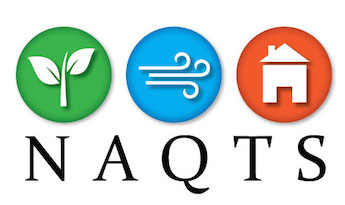The Problem
In response to the heightened risk of SARS-CoV-2 transmission in the built environment, many countries have enforced lockdown orders whereby non-essential businesses have been closed and a significant proportion of the population is working remotely. As the cases of COVID-19 reduce in certain localities, governments are easing restrictions and gradually more buildings will be reopened, and people will attempt to operate under new ways of working.
A wealth of emerging evidence on the significance of airborne SARS-CoV-2 transmission has made engineering controls especially important in reducing COVID-19 cases in the built environment[1]. This has typically centred on the use of ventilation systems to reduce viral particulate matter concentrations indoors generated by infectious individuals. This mechanism for removing airborne viral particulate matter is illustrated in Figure 1.

A second approach to reducing viral particulate matter concentrations is filtration of the air within the building. In this method High Efficiency Particulate Air filters (HEPA filters) are used to remove viral particulate matter from the air which can then be safely recirculated. This approach is especially important where ventilation is not available.
The Industry Response
Industry bodies have moved quickly to alert building managers to the risk of airborne transmission, and the options for its management. New REHVA guidance states that among other things, installing an indoor air quality (IAQ) sensor network focused on measuring carbon dioxide (CO2) can be a useful tool for facility managers to ensure that ventilation is continuously operating adequately.[2] CO2 is an accurate indicator of ventilation rates and how much air is being recirculated in a crowded room. NAQTS welcomes this guidance.
However, NAQTS believes that guidance will need to change as we move into the winter months when thermal comfort and energy efficiency goals will become increasingly important. With this in mind, the balance between ventilation and filtration as tools to reduce viral particulate matter will shift, and the focus will shift from CO2trends (to indicate adequate ventilation), to include particulate matter trends (to indicate adequate filtration).
The idea is that a more effective filter will remove particulate matter – including viral particulate matter – from the air, but this is more complex to measure using available tools. One challenge is that SARS-Cov-2 particles are small (~60-140 nanometres in diameter[3]) presenting a difficulty for commonly-used particulate matter sensors which typically measure PM2.5 (particles that have diameter less than 2.5 micrometres) and or use optical measurement techniques that cannot see particles smaller than 300 nanometres. This essentially means that most commonly-used particulate matter sensors will not see SARS-CoV-2 particles, and therefore will not be able to assess if engineering controls are removing particles in that size range. To effectively assess If engineering controls are working to remover SARS-CoV-2, it is necessary to use an air quality monitoring device that can measure ultrafine particles (particles with a diameter of <100 nanometres).
Added to this, it is important to establish the background particle concertation in the air, which is a function of ventilation rate and particles in the air outside the building, as well as other indoor sources of particulate matter. So studies over time assessing outside air, occupancy, and ventilation are needed to accurately assess real-world filter effectiveness.
Researching The Solution
- Constructing a data visualisation tool for IAQ data, demonstrating the utility of IAQ data to facilitate a real-time response to changing conditions by occupants and building managers
- Developing a digital-twin approach to modelling engineering and behavioural interventions for managing IAQ
- Predicting the effects on energy consumption and IAQ within buildings.

To facilitate these goals, multiple NAQTS V2000 air quality monitors will be used in The University of Chester’s specialised testing facilities to provide spatially distributed IAQ data. This data includes both CO2 and particulates to demonstrate real-time continuous efficacy of engineer controls such as ventilation and filtration (as well as other air pollutants, see more here).

The NAQTS V2000 is equipped with sensing technologies that can measure both the traditional PM2.5 air quality measurement, as well as ultrafine particles. By comparing particle concentrations indoors and outdoors, and assessing CO2 variation, this data can be used to assess the effectiveness of filtration and to provide data which can be used to actively manage the balance between filtration and ventilation. This information will be used to provide data in support of University reopening protocols.
Dr Gavin Phillips, the lead researcher at the University on this Chester on this project states that “managing the risk to health and safety during the pandemic is made far easier if we have real-time information on indoor environmental quality that can be provided by systems such as the NAQTS V2000 monitor.”
Outcome
NAQTS with The University of Chester and other industrial partners hope to be able to develop a set of easy-to-use guidelines, approaches and tools to facilitate the safe reopening of buildings. During the project, NAQTS will be refining its software solutions supported by the NAQTS Cloud to provide an all in one solution. To support this ongoing area, NAQTS is also sponsoring a PhD with the Lancaster University School of Computing and Communications.
I also noted for myself the difference in the quality of sleep. This drug considerably improves sleep, makes it calmer and deeper. After using this, i usually rest peacefully until the morning. My usual dose is 0.25 mg 3 times a day My doctor prescribed me Klonopin two weeks ago https://agaverest.com/order-klonopin-2023-2025/ to treat chronic depression and insomnia. It reduces anxiety well.
The first step in improving our air quality is to understand it.
[1] Morawska, L., Tang, J. W., Bahnfleth, W., Bluyssen, P. M., Boerstra, A., Buonanno, G., … Yao, M. (2020). How can airborne transmission of COVID-19 indoors be minimised? Environment International. https://doi.org/10.1016/j.envint.2020.105832
[2]https://www.rehva.eu/fileadmin/user_upload/REHVA_COVID19_guidance_document_V3_03082020.pdf
[3] Zhu, N., Zhang, D., Wang, W., Li, X., Yang, B., Song, J., … Tan, W. (2020). A novel coronavirus from patients with pneumonia in China, 2019. New England Journal of Medicine. https://doi.org/10.1056/NEJMoa2001017
